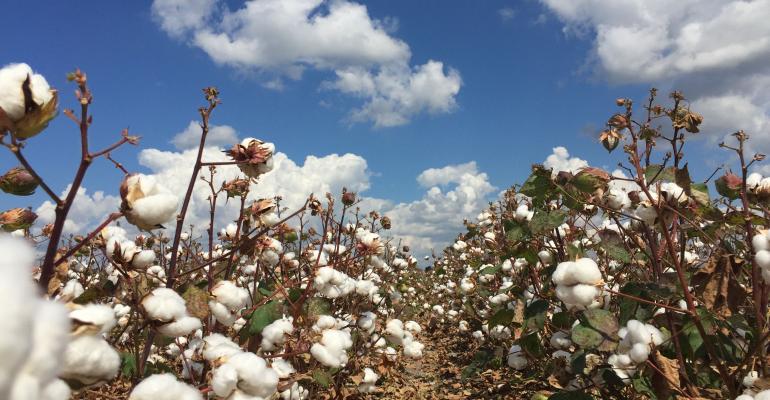The U.S. Department of Agriculture said it has fired 70 foreign contract researchers after a...
USDA Researchers Develop Naturally Fire-Resistant Cotton

Researchers at the U.S. Department of Agriculture’s Agricultural Research Service (ARS) have bred four cotton lines that can be used to make self-extinguishing textiles when exposed to fire. The hope is that these cotton lines will reduce the need for flame-retardant chemicals to be embedded in consumer products.
The new cotton lines were developed from cultivated varieties with a novel flame-retardant trait. When exposed to an open flame, the fabric from the new cotton lines self-extinguished compared to regular cotton fabric, which burned entirely in seconds.
“Use of these lines to develop commercial cultivars creates an opportunity to improve the safety of cotton products while reducing the economic and environmental impacts of chemical flame retardants,” said Brian Condon, senior author of the study published in PLOS ONE and a retired research leader at the ARS Cotton Chemistry and Utilization Research Unit in New Orleans. “These lines will significantly benefit growers, producers, and consumers.”
Cotton typically produces flammable fibers and is treated with chemicals to be flame retardant when used for consumer products like clothing, mattresses, upholstery, and carpet. The new cotton lines were created by a multi-parent breeding approach that resulted in new opportunities for natural genes to interact and develop the unexpected trait of flame retardancy.
The video (CLICK HERE) demonstrates that during a standard 45-degree incline flammability test, regular cotton (top) burned instantly when exposed to an open flame. In the same test, the fire-resistant cotton (bottom) self-extinguished when exposed to an open flame.
Although all of the parental cotton lines produced flammable fabric, researchers found that flame retardance did not come from a single gene. Instead, they found that multiple genes created a phenotype for fibers with significantly lower heat release capacities. The new cotton lines also possessed the desired agronomic and fiber quality traits, making the lines sought after for breeding and consumer usage.
EDITOR’S TAKE:
The discovery of flame-resistant cotton could be a huge game-changer for all involved – from producer to consumer. This development has the potential to reduce or eliminate the use of chemicals in the production of carpet, fabrics, clothing, etc. It could offer greater protection against fire or catastrophic loss, thus, lowering insurance rates. And think of the potential to reduce or even eliminate severe burns for humans. Assuming that these cotton lines have equal or better production characteristics compared with existing varieties, it would be a win for producers as well. Perhaps it might carry a price premium and provide higher returns for producers. All-in-all it seems like this could be a very significant discovery!








